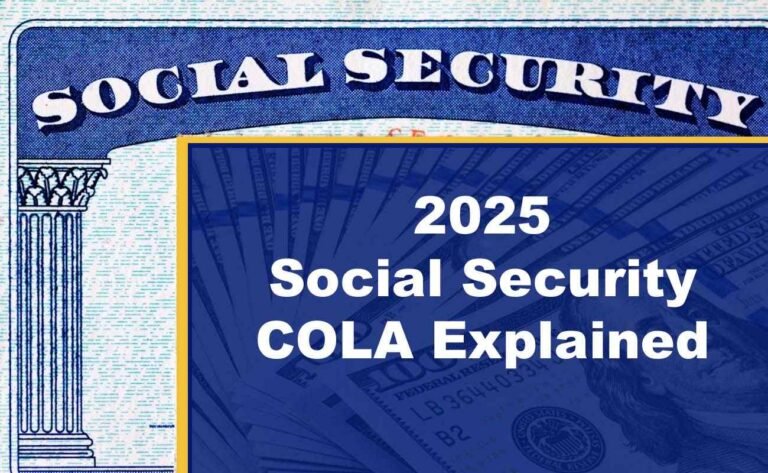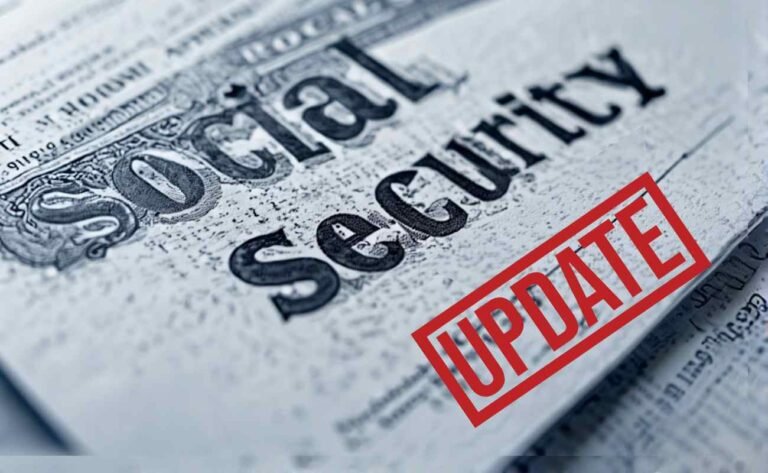Social Security Fairness Act 2025: Who Qualifies, Payment Amounts, and Key Dates
The Social Security Fairness Act payments 2025 represent a monumental shift for millions of retirees, spouses, and surviving spouses who were previously impacted by the Windfall Elimination Provision (WEP) and Government Pension Offset (GPO). Signed into law on January 5, 2025, this legislation eliminates these decades-old provisions, restoring full Social Security benefits for public sector workers like teachers, firefighters, and police officers who receive pensions from non-Social Security-covered employment. By July 7, 2025, the Social Security Administration (SSA) completed distributing over $17 billion in retroactive payments to more than 3.1 million beneficiaries, five months ahead of schedule. This guide provides a detailed, easy-to-read breakdown of eligibility, payment amounts, timelines, and actionable steps to ensure you maximize your benefits under this transformative law.
This article is your go-to resource for understanding how the Social Security Fairness Act 2025 affects you. With clear lists, tables, and practical advice, we’ll cover who qualifies, how much you might receive, when payments are issued, and what to do if you’re still waiting. Whether you’re a retiree, a spouse, or a surviving spouse, this guide simplifies the complexities of the SSFA to help you navigate your benefits confidently. Let’s dive into the details to ensure you’re fully informed and prepared.
What Is the Social Security Fairness Act 2025?
The Social Security Fairness Act (SSFA), signed into law by President Joe Biden on January 5, 2025, marks a historic reform by repealing the WEP and GPO. These provisions, enacted in 1983 and 1977 respectively, reduced or eliminated Social Security benefits for individuals with pensions from non-Social Security-covered jobs, such as certain public sector roles or foreign pension systems. The repeal means that nearly 2.8 million beneficiaries, including teachers, firefighters, police officers, and federal employees under the Civil Service Retirement System (CSRS), can now receive their full Social Security benefits alongside their pensions. Additionally, the law applies retroactively to benefits payable from January 2024, resulting in lump-sum back payments for eligible recipients.
The SSA has made significant progress in implementing these changes, with most beneficiaries receiving adjusted monthly payments by April 2025 and retroactive payments by July 2025. However, some complex cases require manual processing, which may extend timelines to November 2025. Below, we’ll break down the key aspects of the SSFA in structured lists and tables to ensure you understand every detail.
Who Qualifies for Social Security Fairness Act Payments in 2025?
Not every public sector retiree or spouse qualifies for Social Security Fairness Act payments 2025. Eligibility depends on specific criteria related to your pension and Social Security contributions. Here’s a detailed list of who qualifies:
- Public Sector Retirees with Non-Covered Pensions:
- Teachers, firefighters, police officers, and other state or local government employees in roles not covered by Social Security taxes.
- Federal employees under the Civil Service Retirement System (CSRS) who did not pay into Social Security.
- Individuals with pensions from foreign social security systems.
- Spouses and Surviving Spouses:
- Spouses or surviving spouses of Social Security-covered workers whose benefits were reduced or eliminated by the GPO.
- Surviving spouses receiving pensions from non-covered employment, now eligible for full survivor benefits.
- New Applicants:
- Individuals who never applied for Social Security benefits due to WEP or GPO but are now eligible post-repeal.
- Those who filed new claims after January 5, 2025, with the SSA processing 92% of 289,715 new applications by July 17, 2025.
- Non-Eligible Groups:
- Approximately 72% of state and local public employees who worked in Social Security-covered jobs and paid Social Security taxes are not affected by WEP or GPO and thus see no benefit increase.
- Individuals without a non-covered pension or Social Security contributions.
Key Statistic: The Congressional Budget Office (CBO) estimates that 2.1 million retirees (3% of Social Security beneficiaries) and 770,000 spouses or surviving spouses qualify for increased benefits under the SSFA.
How Much Are Social Security Fairness Act Payments in 2025?
The financial impact of the Social Security Fairness Act 2025 varies based on individual circumstances, such as the type of benefit, pension amount, and employment history. Below is a table summarizing estimated payment increases and retroactive amounts:
| Beneficiary Type | Provision Removed | Estimated Monthly Increase | Average Retroactive Payment |
|---|---|---|---|
| Retirees (Dual Earners) | WEP | $360 | $6,710 |
| Spouses | GPO | $700 | $8,400 |
| Surviving Spouses | GPO | $1,190 | $10,000+ |
Factors Affecting Payment Amounts
- Type of Benefit: Retirement, disability, spousal, or survivor benefits each have different calculation methods.
- Pension Amount: Larger pensions may result in smaller Social Security increases, while smaller pensions could lead to increases up to $1,000+ monthly.
- Years of Covered Employment: More years paying into Social Security can increase your benefit amount.
- Retirement Age: Early claiming before full retirement age may reduce benefits, as standard Social Security rules still apply.
Example: A retired teacher with a CSRS pension and 10 years of Social Security-covered work might see their monthly benefit increase by $400, plus a retroactive payment of $7,000 for 2024 benefits. Conversely, a surviving spouse with a non-covered pension could receive a $1,200 monthly boost and a $12,000 lump sum.
For a broader understanding of payment schedules, check out our guide on the Social Security Payment 2025 Calendar for detailed payment dates.
When Will You Receive Social Security Fairness Act Payments?
The SSA has prioritized swift implementation of the SSFA, completing most payments ahead of schedule. Here’s a timeline of key milestones:
- February 25, 2025: SSA began adjusting monthly benefits for those affected by WEP and GPO. Retroactive payments for January 2024 onward started being deposited.
- March–April 2025: Most beneficiaries saw increased monthly payments in their April checks (for March benefits).
- July 7, 2025: SSA completed sending over 3.1 million payments totaling $17 billion, five months ahead of the initial December 2025 deadline.
- August 2025: Final adjustments for complex cases, with payments reflected in August checks.
- November 2025: SSA aims to resolve all remaining manual processing cases.
Retroactive Payment Timeline
- Eligibility Period: Benefits payable from January 2024 (received in February 2024) are eligible for retroactive adjustments, as December 2023 was the last month WEP and GPO applied.
- Payment Method: Lump-sum payments are deposited directly into the bank account on file with the SSA.
- Notification: Beneficiaries receive one or two mailed notices—one when WEP/GPO is removed and another when the new monthly amount is set. Notices may arrive after payments.
Note: If you haven’t received your payment by August 2025, contact the SSA at 1-800-772-1213 (Monday–Friday, 8:00 a.m.–7:00 p.m. local time) or visit a local SSA office.
Steps to Take for Social Security Fairness Act Benefits
To ensure you receive your Social Security Fairness Act payments 2025, follow these actionable steps:
- Verify Your Information:
- Check your mailing address and direct deposit details via your my Social Security account.
- Update any outdated information to avoid delays in receiving payments or notices.
- Determine Your Eligibility:
- Confirm if you have a non-covered pension (e.g., CSRS, state pension, or foreign pension).
- If unsure, call the SSA at 1-800-772-1213 to verify your status.
- Apply if Necessary:
- If you never applied for Social Security benefits due to WEP or GPO, file an application online at ssa.gov/apply or by phone.
- New applicants since January 2025 number 289,715, with 92% processed by July 17, 2025.
- Monitor Your Payments:
- Check your bank account for lump-sum deposits and increased monthly payments.
- Review SSA notices for confirmation of benefit adjustments.
- Avoid Scams:
- Be cautious of calls, emails, or texts requesting payment to process your benefits. Report scams to the SSA Office of Inspector General at ssa.gov/scams.
Pro Tip: Avoid submitting duplicate applications, as they can delay processing. If you’ve already applied, wait for SSA confirmation before taking further action.
Managing Medicare Premiums Under the SSFA
The SSFA has implications for beneficiaries paying Medicare premiums, especially those previously affected by WEP or GPO. Here’s how to navigate these changes:
- Current Medicare Payers:
- If you pay premiums directly to the Centers for Medicare & Medicaid Services (CMS), continue until you receive an SSA notice confirming your benefit increase.
- Once your Social Security benefit covers the premium, it will be deducted automatically.
- Duplicate Deductions:
- Some CSRS annuitants may experience dual premium deductions from both their Social Security benefit and CSRS annuity.
- CMS is addressing refunds for overpayments. Contact 1-800-MEDICARE (1-800-633-4227) for assistance.
- Stopping Direct Payments:
- For Medicare Easy Pay users, complete the SF-5510 form to stop ACH payments at medicare.gov.
- For online bill payments, contact your bank to halt payments.
Example: A retiree paying $174.70 monthly for Medicare Part B directly to CMS will see this amount deducted from their new Social Security benefit after SSFA adjustments, with any prepaid premiums refunded.
Financial and Tax Implications of SSFA Payments
The Social Security Fairness Act payments 2025 can significantly impact your financial planning. Here’s a breakdown of considerations:
Financial Planning
- Increased Income: Monthly increases of $360–$1,190 allow for earlier retirement, increased spending, or adjusted savings goals.
- Investment Adjustments: Treat enhanced Social Security benefits as part of your fixed-income portfolio, potentially allowing for a more aggressive investment mix.
- Program Eligibility: Higher income may affect eligibility for programs like SNAP. Consult local assistance offices to reassess your status.
Tax Implications
- Taxable Income: Increased Social Security benefits may push you into a higher tax bracket or affect Social Security income taxation thresholds.
- Withholdings: Review your tax withholdings to account for lump-sum payments, which may be taxable.
- Professional Advice: Work with a financial advisor to optimize your tax strategy, especially if receiving a large retroactive payment.
Stat Insight: The CBO estimates the SSFA will cost $196 billion over a decade, highlighting its significant impact on public sector retirees’ financial security.
Common Challenges and Solutions
While the SSA has processed 91% of benefit adjustments by June 2025, some beneficiaries face delays. Here’s a list of common issues and how to address them:
- Delayed Payments:
- Cause: Complex cases involving multiple pensions, survivor benefits, or outdated records require manual processing.
- Solution: Contact the SSA by November 2025 if you haven’t received payments or notices.
- Incorrect Benefit Amounts:
- Cause: Errors in employment history or pension data.
- Solution: Provide updated documentation, such as W-2s or pension statements, to the SSA.
- Duplicate Applications:
- Cause: Reapplying unnecessarily can clog the system.
- Solution: Check your application status via your my Social Security account before reapplying.
- Scams:
- Cause: Fraudsters exploit the SSFA’s publicity.
- Solution: Never pay for benefit processing and report suspicious activity to the SSA.
State-by-State Impact of SSFA Payments
The Social Security Fairness Act 2025 affects beneficiaries differently across states due to variations in public sector pension systems. Here’s a table highlighting states with significant SSFA impacts:
| State | Estimated Affected Beneficiaries | Key Affected Groups |
|---|---|---|
| California | 350,000 | Teachers, state employees |
| Texas | 300,000 | Teachers, firefighters, police officers |
| Maine | 25,000 | Career & Technical Educators |
| Illinois | 200,000 | Public sector workers, CSRS annuitants |
| New York | 180,000 | Local government employees, teachers |
Note: The SSA provides state-specific payment data on its website, allowing you to view disbursements by zip code.
FAQs About Social Security Fairness Act Payments 2025
Below are answers to common questions about the Social Security Fairness Act 2025:
- Do I need to reapply for benefits?
No, current beneficiaries with WEP or GPO reductions are automatically adjusted. New applicants should file online or by phone. - How will I know if my payment is processed?
Check your bank account for deposits and expect mailed SSA notices confirming adjustments. - Will increased benefits affect other aid?
Possibly. Higher Social Security income may impact SNAP or other income-based programs. Contact local agencies for guidance. - What if I don’t receive my payment by August 2025?
Call the SSA at 1-800-772-1213 or visit a local office to check your case status.
Final Thoughts on Social Security Fairness Act Payments 2025
The Social Security Fairness Act 2025 is a game-changer for nearly 3 million Americans, restoring fairness to Social Security benefits for public sector workers and their families. With over $17 billion in retroactive payments already distributed and monthly increases ranging from $360 to $1,190, this legislation offers significant financial relief. By verifying your SSA information, staying patient with complex cases, and avoiding scams, you can ensure you receive your entitled benefits. For additional context on Social Security updates, explore our guide on the Double SSI Payment Schedule August Key Dates to stay informed about related benefit changes.
This reform not only boosts retirement income but also prompts a reevaluation of financial and tax strategies. As the SSA finalizes remaining adjustments by November 2025, keep your records updated and consult professionals to maximize your benefits. The SSFA is a testament to correcting long-standing inequities, ensuring public servants receive the full Social Security benefits they’ve earned.







